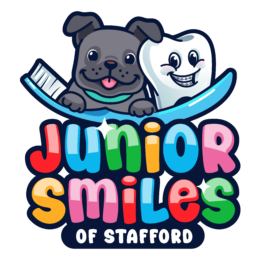What is Hypodontia in Children? Causes, Treatments, and More

Imagine your child has lost their baby teeth and is eagerly awaiting the arrival of their permanent replacements, only to learn that certain teeth aren’t erupting as planned. For youngsters with the dental disorder hypodontia, this is a possible occurrence. One or more permanent teeth being absent is a problem that occurs between 2 and 6 percent of the population yet is often missed.
While this may come as a shock, learning more about hypodontia, what causes it, and the options for treatment may help put parents’ minds at ease and give them a sense of direction. This article will explain what hypodontia is and how to handle it if your child ever develops it.
What is Hypodontia?
Hypodontia refers to the loss of one or more permanent teeth. As many people don’t have room in their mouths for their third molars, sometimes known as wisdom teeth, this exception does not apply to them. About 2-6% of the population is estimated to have hypodontia, making it one of the most prevalent dentition abnormalities.
In spite of the fact that many people are unfamiliar with the phrase, its implications might be significant. The permanent teeth of children with hypodontia may be slow to erupt or not emerge at all after the loss of their baby teeth. When lacking front teeth—which are essential for both face appearances and basic functionality like eating and speaking—this void can be extremely glaring.
There is a spectrum of hypodontia severity. Mild hypodontia is defined as the loss of one or two teeth, whereas severe hypodontia, also called oligodontia, is defined as the loss of six or more teeth.
Prevalence of Hypodontia in Children
About one percent of infants are born without any of their primary teeth. It’s more common with adult teeth; around 5 percent of the population has it, excluding wisdom teeth.
More women than males suffer from missing teeth at birth, whereas men are more likely to have an abundance of teeth or teeth that are abnormally large for their jaws.
Causes
Below are some of the factors that contribute to the development of hypodontia:
Genetic Conditions
There appears to be a substantial hereditary component to hypodontia. It’s common in people with genetic disorders including Gardner’s syndrome and Ehlers-Danlos. However, it is also possible for it to develop independently of other syndromic signs.
Exposure to Harmful Substances
Some environmental variables during early childhood development may possibly have a role in generating hypodontia. One such factor is being subjected to harmful substances like drugs or poisons. Hypodontia can also be caused by radiation, allergies, chemotherapy, toxic epidermal necrolysis, or polychlorinated biphenyls (PCBs).
Diagnosis
A comprehensive clinical examination is the starting point for identifying hypodontia. Your child will see the dentist to have his or her mouth examined for any evidence of more teeth that may have erupted or be on the way out. This involves looking at the upper and lower dental arches in detail. When this isn’t enough, dentists may resort to panoramic radiography. In this specialized X-Rays, they will show the entire jaw, so you can see whether there are any additional teeth.
Treatment
The presence of additional teeth might be disconcerting at first glance, but hypodontia is treatable with the appropriate approach. Treatment for hypodontia varies widely depending on the child’s specific condition, including the number and location of the extra teeth as well as their impact on the child’s dental health. Some typical methods of therapy are discussed below:
Extraction
Treatment for hypodontia often entails removing the additional teeth. The additional teeth are removed when their presence causes crowding, prevents the emergence of permanent teeth, or causes other oral issues. As a simple technique, extraction is typically done while the patient is under the influence of local anesthetic. The time of extraction is crucial, and it is often designed to minimize the impact on the growing dentition.
Orthodontic Treatment
The removal of the supernumerary teeth may be followed by the need for orthodontic treatment if hypodontia has caused crowding or misalignment of the natural teeth. The health and function of the remaining teeth are much enhanced when this is done, leading to a more healthy teeth.
Implants
As with previous dental treatment options, dental implants can be used to replace teeth that were born missing, but they can only be placed once the patient’s jaw and facial bones have finished developing. A dental implant is a tiny metal screw that is surgically implanted into the jawbone and then has a crown placed on top of it. Implants are a long-term solution that should feel and look much like your original teeth.
Dental Bridge
If several consecutive teeth are missing in your child, you may want to consider either removable or fixed replacements. The type of tooth replacement known as a fixed dental bridge is ideal for those with sturdy jawbones. Removable bridges are a good option for people with inadequate jawbone structure. And these bridges are quicker and easier to install and cost less than implants.
Read more: What is Silver Diamine Fluoride and Is It Safe for Kids?
Wrapping Up: Navigating Hypodontia in Young Smiles
Hypodontia, while uncommon, is a dental condition that requires thorough understanding and careful management, especially in children. As the leading pediatric dentist in Stafford, VA, Junior Smiles of Stafford is adept at diagnosing and crafting tailored treatment plans for such conditions. Knowledge is the first step towards addressing hypodontia, but having a trusted partner in your child’s dental journey is equally vital. If you suspect your child might have hypodontia or if you have questions about any other dental concerns, reach out to us. Book a consultation with our pediatric dentists today and ensure that your child receives the best care for a lifetime of bright smiles.

